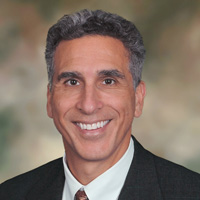Living on Your Investments? What Happens When a Bear Market Hits?
Investors are often told to "stay the course" even as stock markets go through tough times. However, if you're retired, that advice could put your nest egg in jeopardy.


Many people follow a buy-hold strategy when it comes to investing: You know, just hold on to your stocks through the bad times, and you’ll be all right in the end. Is it true? I don’t think so.
I think buy-hold is a dangerous philosophy, especially if you are a retiree living on your investments. Bear markets tend to occur every three years on average (we are way overdue) and could devastate your retirement nest egg if you keep it in the market.
Let’s examine what could have happened if you had hypothetically invested $1 million in an S&P 500 index fund that exactly tracked the S&P 500, which did not charge any internal expenses or fees. You did not incur any external investment management fees for managing that fund, and you “stayed the course” during a period that included bear markets.
From just $107.88 $24.99 for Kiplinger Personal Finance
Become a smarter, better informed investor. Subscribe from just $107.88 $24.99, plus get up to 4 Special Issues

Sign up for Kiplinger’s Free Newsletters
Profit and prosper with the best of expert advice on investing, taxes, retirement, personal finance and more - straight to your e-mail.
Profit and prosper with the best of expert advice - straight to your e-mail.
In January of 2000, the S&P 500 was at 1441. In January 2018, the S&P 500 reached a new all-time high of 2872, almost doubling over that 18-year period. Using the rule of 72* to find your rate of return, you’d divide 72 by 18 years and find that your investments averaged a 4% return. Had you drawn 4% each year from your investment, as many people say you should to cover your retirement cost-of-living, you might think you’d would still have your original $1 million today.
Unfortunately, you’d be wrong.
To begin with, you have to consider inflation. A million today does not have the same purchasing power as $1 million 18 years ago. Taking that into account, the $1 million you started with would actually be worth about $600,000.
The other issue is that the S&P 500 index didn’t deliver 4% evenly over that period. It fell close to 50% over the two years of the Y2K bear market, and you would have compounded that loss by taking out the 4% you needed to live on. The same thing happened during the 2008 bear market: The S&P 500 fell approximately 57%, but with that additional 4%, your money would have been depleted by over 60%, leaving you with less than 40% left. Farmers call that “eating your seed corn.” If you eat your seed corn, you've got nothing left to plant when growing season comes.
And there’s another problem: If you’re like most retirees, you probably wouldn’t have had 100% of your money in stocks. If you had a 60/40 stocks/bonds split, your actual rate of return for the stock allocation would have been closer to 2.4% over that 18-year period. And remember, you were still taking out 4% all that time, eating more and more of your seed corn. Never mind getting ahead — it would be tough to recoup even the initial investment under this scenario.
There’s an old expression: It's not how much you make that matters, it's how much you keep. If you want to keep more of your money, I believe that buy, hold and sell is a much better strategy than buy-hold. Using our buy, hold and sell strategy, we counseled our clients to sell in November of 2007 and stay out until June of 2009. I believe that buy, hold and sell can help you avoid losses during bear markets and protect the investments you need to live on during your retirement.
Some may say that I advocate timing the market. Nothing could be further from the truth. What I do advocate is that you consider a stop-loss order when investing. To do this, you would set a tolerable percentage loss below the previous high your investments reached, and sell when you reach that stop-loss point. Another great thing about a stop-loss: As your investments grow, your stop-loss point should rise along with them.
Watch for future articles where I will discuss how to set stop-losses (there are some things to be careful about, especially in volatile markets), where to consider putting your money once you have sold, and how to create a strategy for buying back into the market afterward.
* The rule of 72 is an equation that estimates the number of years required to double your money at a given annual rate of return.
Profit and prosper with the best of Kiplinger's advice on investing, taxes, retirement, personal finance and much more. Delivered daily. Enter your email in the box and click Sign Me Up.

Ken Moraif is the CEO and founder of Retirement Planners of America (RPOA), a Dallas-based wealth management and investment firm with over $3.58 billion in assets under management and serving 6,635 households in 48 states (as of Dec. 31, 2023).
-
 Retirees in These 7 States Could Pay Less Property Taxes Next Year
Retirees in These 7 States Could Pay Less Property Taxes Next YearState Taxes Retirement property tax bills could be up to 65% cheaper for some older adults in 2026. Do you qualify?
-
 Estate Tax Quiz: Can You Pass the Test on the 40% Federal Rate?
Estate Tax Quiz: Can You Pass the Test on the 40% Federal Rate?Quiz How well do you know the new 2026 IRS rules for wealth transfer and the specific tax brackets that affect your heirs? Let's find out!
-
 'The 'Mamdani Effect' in New York: Can the City Afford a Millionaire Tax?
'The 'Mamdani Effect' in New York: Can the City Afford a Millionaire Tax?State Tax Will higher income taxes drive the wealthy to flee New York in 2026?
-
 5 Smart Things to Do With Your Year-End Bonus, From a Financial Professional
5 Smart Things to Do With Your Year-End Bonus, From a Financial ProfessionalAfter you indulge your urge to splurge on a treat, consider doing adult things with the extra cash, like paying down debt, but also setting up a "fun fund."
-
 Are You a Gen X Investor? Here's How You Can Protect Your Portfolio From an AI Bubble
Are You a Gen X Investor? Here's How You Can Protect Your Portfolio From an AI BubbleAmid talk of an AI bubble, what's the best course of action for investors in their 50s and 60s, whose retirement savings are at risk from major market declines?
-
 Hey, Retirees: Put Your Charitable Gifts in a Donor-Advised Fund (and Enjoy Your Tax Break)
Hey, Retirees: Put Your Charitable Gifts in a Donor-Advised Fund (and Enjoy Your Tax Break)A donor-advised fund is a simple (really!), tax-smart strategy that lets you contribute a large, tax-deductible gift now and then distribute grants over time.
-
 Nasdaq Sinks 418 Points as Tech Chills: Stock Market Today
Nasdaq Sinks 418 Points as Tech Chills: Stock Market TodayInvestors, traders and speculators are growing cooler to the AI revolution as winter approaches.
-
 If You're a U.S. Retiree Living in Portugal, Your Tax Plan Needs a Post-NHR Strategy ASAP
If You're a U.S. Retiree Living in Portugal, Your Tax Plan Needs a Post-NHR Strategy ASAPWhen your 10-year Non-Habitual Resident tax break ends, you could see your tax rate soar. Take steps to plan for this change well before the NHR window closes.
-
 Could Target-Date Funds With Built-In Income Guarantees Be the Next Evolution in Retirement Planning?
Could Target-Date Funds With Built-In Income Guarantees Be the Next Evolution in Retirement Planning?With target-date funds falling short on income certainty, retirement plans should integrate guaranteed income solutions. Here is what participants can do.
-
 Stocks Chop as the Unemployment Rate Jumps: Stock Market Today
Stocks Chop as the Unemployment Rate Jumps: Stock Market TodayNovember job growth was stronger than expected, but sharp losses in October and a rising unemployment rate are worrying market participants.
-
 Your Year-End Tax and Estate Planning Review Just Got Urgent
Your Year-End Tax and Estate Planning Review Just Got UrgentChanging tax rules and falling interest rates mean financial planning is more important than ever as 2025 ends. There's still time to make these five key moves.